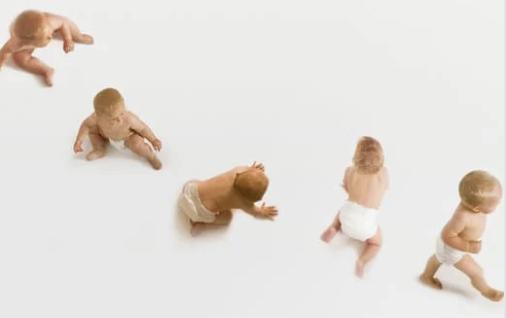Babies learn to walk as they grow and develop stronger leg muscles. Walking is about confidence and balance. Walking time for every child is different. Generally, children are enthusiastic about walking; however, some start at nine months, and others start walking at 18 months. Parents should understand that both are normal, and comparisons with other kids may lead to concern.
But if, after 18 months, your baby is still not walking, then you must consult a pediatrician.
Causes
The following are the causes of delayed walking in children
* Muscular Issues
This is a progressive hereditary Neuromuscular disease known as muscular dystrophy.
* Premature birth
Premature baby has a significant chance of developmental delay, thus causing delayed walking.
* Vitamin D & Calcium deficiency
Healthy bone development needs calcium and vitamin D.
* Neurological disorders
Such as Down’s syndrome or cerebral palsy, cause a delay in walking.
* Rickets
Delayed walking mainly occur due to rickets.
* Delayed motor skills
Late walking occur due to a delay in motor skills.
* Hypothyroidism
If the thyroid under active, it may cause delayed walking.
* Familial Maturational delay
If any parents have delayed walking in their childhood, there is a chance of having the same issue in their children.
Some other reasons may involve the following
* Carrying the baby constantly, and do not let them walk or crawl.
* Intellectual Impairment
* Enhanced muscle tone
* Stiffness of limbs or balance issues
* Rigid muscle tone
Symptoms
If your baby has the following issues such as
* The child has had problems sitting without support for nine months.
* Children have problems standing without permission for 12 months.
* Children have regular walking issues by 16-23 months.
* A child walks on tiptoes.
Tips for managing delayed walking in children
1. Built confidence
Babyproofing is a way to give you and your child confidence.
2. Walk barefoot
Let your child walk on the floor barefooted as tiny muscles in feet develop and need to be strong.
3. Burly shoes
Cradle shoes don’t help the baby in walking. Children need shoes that support their ankles and soles to prevent rolling or swaying.
4. Provocation and Encouragement
When you celebrate their small victories as their crawl or taking of 1st step. This will promote and encourage their will to do the same and more.
5. Fear Reduction
When the child starts to walk, keep holding things such as furniture, including a chair or table, close to them to prevent fear of falling and build confidence in having something to hold on to. Then slowly remove these supports to make them walk independently by holding them from underarms, on hands, or in the trunk.
6. Enactment and steadiness
Ensure the child is practicing walking daily, as doing it once or twice a week is needed. Make it a habit and let them practice daily. Stay consistent with these activities and tips. Make the child push the car as this will make them take small steps while holding on to something, and they will find it a fun activity; thus, continue walking.
7. Put your child down on their feet
When removing your child from your lap, place them on their feet in a standing position instead of sitting.
8. Adult Cooperation and physical therapy
Instead of one adult making the child walk, two adults are better, as one adult will hold the child, and the other is influencing the child to move. Consult a pediatrician who will suggest a physical therapist for your child to start walking after knowing the factors of developmental delay and introduce a few exercises your child needs.
Conclusion
Walking is a natural process that can be delayed due to neurological issues, developmental delay of motor skills, familiar maturational delay, or intellectual impairment. This needs to get started among children by influencing and encouraging them through adult cooperation, enactment, putting the child on feet, bare feet walking, and supportive tools to hold on to while walking such as a car or consult a pediatrician for a physical therapist.

